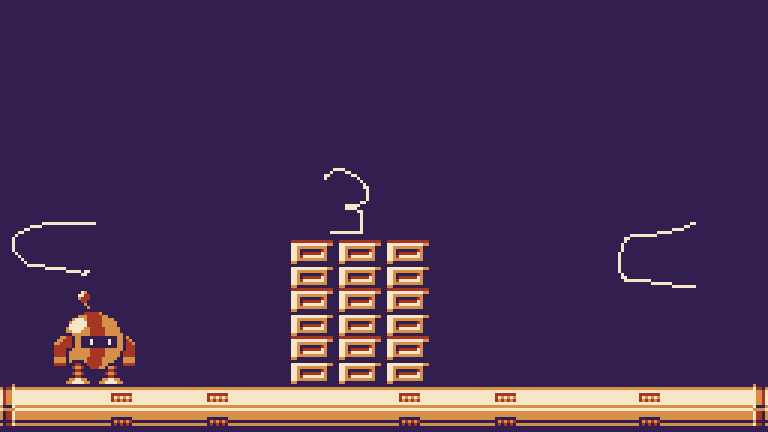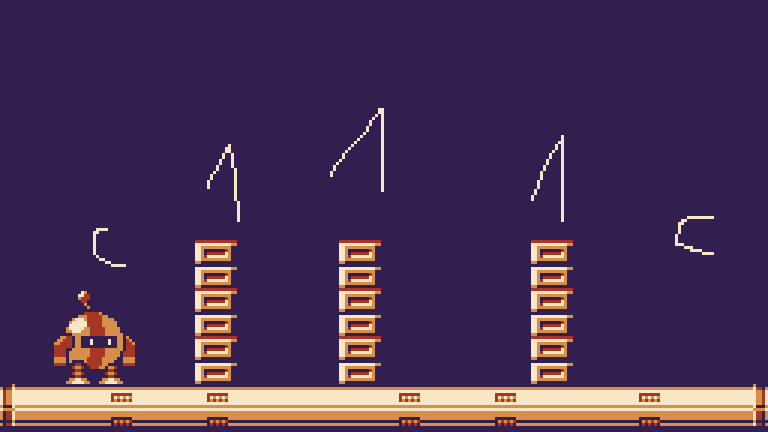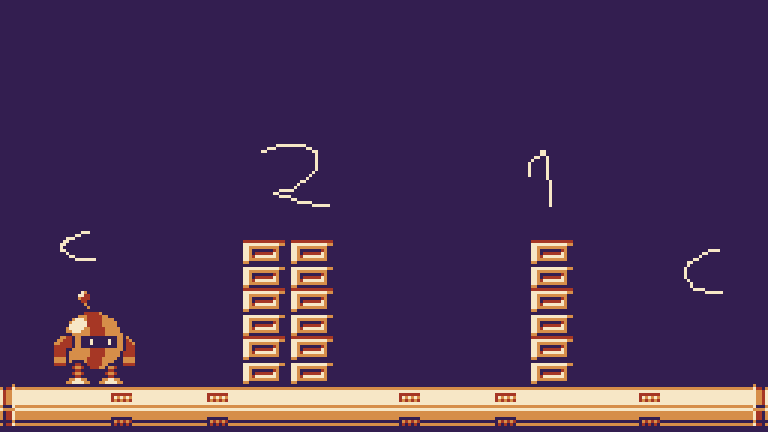Thoughts about difficulty in platforming games
So I’ve been thinking a lot about leveldesing in 2D platforming games lately. Partially because I’m making one of these games right now, but also because I recently played a bunch of them and I found myself getting incredibly frustrated by almost all of them.
With some it was the controls, that either were too stiff for my liking, or felt like the whole game was running under water, or in slow motion. When the controls were fine, I eventually ran into situations where the game entered what I started to call “the bullshit zone”, which basically means that instead of keeping a fairly even difficulty curve, everything just gets turned up to eleven at once. Distances between checkpoints increase, enemies get harder and stage hazards become more prevalent and hard to deal with.
It soured me on a bunch of games I was actually enjoying and as I said, it got me thinking about difficulty in platforming games, and under which circumstances I’m personally okay with it, and when not.
The way I ended up thinkin about this was to think of the player you’re controlling as a projectile and the challenges that you have to overcome as a series of barriers, where the thickness of each barrier corresponds with the degree of difficulty of each challenge.
Now keep in mind that this a gross oversimplification of things and does by no means imply that this is an actual useful way to approach level design and if I see anyone pick this idea up and turn into some kind TED-talk-like-gospel, I will find and I will slap you. This is also a bit of a useless exercise, because what we perceive as difficulty, varies a lot between people, so what I think of as hard, might be easy for you and vice versa.
With that disclaimer out of the way, let’s continue down this road to reductionism:
Say we have segment in a game that lies between two checkpoints, and the overall difficulty rating of the segment is “3”, there are four different permutations in which this overall difficulty can be expressed:
One is just one big difficult segment:

One is three equally difficult segments:

One has one moderately difficult segment at the start, and an easier one towards the end:

The last one is like the third, but reverse, where the harder element comes last:

Just with these four scenarios we can see how each one of them, though the same in overall difficulty, will be perceived differently in play. Scenario one, will be a hard wall, but once it’s overcome, there isn’t much else in the way in terms of stopping the player for a while. Scenario 2 has easier steps, but is also kind of monotonous. It also has the problem that it just keeps throwing new stuff your way, even though each singular challenge is easy. This can feel exhausting. Scenario 3 starts hard, but once you’re past it, pretty much guarantees you progress, while Scenario 4 makes you think everything’s good, but then punches you right before the next checkpoint.
The next thing we have to keep in mind is that the walls re-appear upon restart. Most platforming games are centered around players learning how to move through the world, and so not every wall will be as high as before. How much each wall will “regenerate” so to speak, usually depends on how much the specific challenge requires the players to execute certain movements, as opposed to just learning a stage. The more specific moves players have to execute in order to get by a challenge, the more the wall regenerates, so to speak. Knowing that you have to press a button at a certain time, only gets you so far, when the timing is tricky.
This whole thing is also incredibly relative and heavily depends on each player’s approach and access to different tools. But it’s my impression that the more moving parts a challenge has, be it enemy types, stage hazards, but also upgrades and powerups on the player side, the more variance you have in terms of having either walls that don’t regenerate at all, or some that seem to never get any easier.
From my recent experiences, it feels like it’s this regenerative quality of difficulty walls, that cause me the most frustration and what contributes most to what I started calling “the Bullshit Zone”.
The Bullshit Zone is when a game not only has a high degree of difficulty within a specific level segment, but also a large distance between checkpoints, as well as walls with a high degree of regeneration.
If we were to go back to our projectile analogy, the Bullshit Zone is similar to shooting into a dense blob of Jello, where you can’t really tell whether or not it actually gets through. And once it made it through, you have no idea how and why it worked this time, but not all those other times before.
It’s a deeply frustrating place to be in and it gets even worse, when games decide to not only occasionally venture into the Bullshit Zone, but instead halfway through decide that they actually want to live there.
Personally I find that I like difficult segments in games more when the walls are barely regenerating at all and instead just explode. A part of a game can be really hard, but it’s not a big problem for me, if 1) It ramps down a bit after I got through it and 2) having to re-do it again isn’t nearly as difficult as the first time around. Everything feels more like it’s moving forward and it’s more exciting, because you get to see new stuff and all that! It’s also how I try to build my own games, though how much I succeed at that, I don’t know.
Now all of this doesn’t mean that the way I like to make games is the better one, and that you have to have certain kinds of difficulty in your games, or else they are bad and terrible. If anything, what frustrated me the most with the games I played recently was that the difficulty spikes weren’t earned. The games just decided to take the gloves off, without any real narrative sense behind them. Knowing that certain kinds of segments generally tend to be more frustrating than others doesn’t mean that you should avoid putting them in your games. It means (like with anything else you put in your games), you should think about what you want to communicate to your players and build the spaces accordingly. Being frustrated and smacked into a wall over and over again, can be interesting with the right narrative reasons. More often than not though I feel like a lot of games, especially platformers, think that just being incredibly difficult and having lots of moving parts equals having good, or interesting levels and that’s something I strongly disagree with.
So where exactly is the practical value to this approach? I don’t think there is any, to be honest. I was mostly trying to figure out a way to express why certain games really bothered me, while other’s, who are equally difficult, didn’t.
It would also explain why I like Mega Man games quite a lot, because their walls come down really quickly, once you play the games more than once and it’s something I find deeply satisfying. It feels very deliberate (and going by interviews from the person who directed the first two games, it sure sounds like it was), whereas with a lot of other games, it doesn’t. Especially a lot of the more recent Indie platformers feel like a Pizza where someone went “all these toppings are great, which means when I put them all on one Pizza, I will make the best Pizza ever!”. However instead of creating something really nice and good, they usually end up with a sloppy mess that is mostly held up by virtue of having spent tons of money on good ingredients (PR) and not really because of how well thought out the whole thing was.